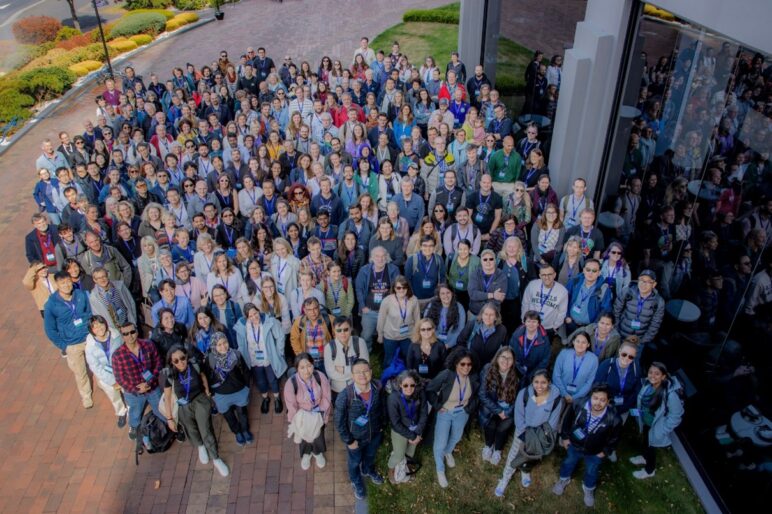Aidan Hunter, Nadine Johnston, Dan Mayor, Kathryn Cook and Geraint Tarling attended the 7th ICES/PICES Zooplankton Production Symposium in Hobart, Tasmania (17-21 March 2024). The conference was packed with sessions of direct relevance to BIOPOLE research, particularly on understanding the ecology of calanoid copepods and the contribution of zooplankton to the biological carbon pump.
The BIOPOLE researchers each gave well received oral presentations. Aidan talked about his data mining, parameterisations and modelling of the copepod Calanoides acutus at a session on the dynamics and role of diapausing copepods in marine ecosystems. Nadine spoke on knowledge gaps and research priorities in zooplankton research at a session on zooplankton in a changing Southern Ocean. In other sessions, Dan talked about stoichiometry modelling and Kathryn, some associated work with the COMICS programme on carbon budgets. Geraint gave a keynote talk considering biogeographic shifts in copepod species in the Arctic and potential impacts on the lipid pump there.

The BIOPOLE researchers also took part in a number of satellite workshops covering zooplankton trait data and time-series. Also notable was a zooplankton art session that commenced with the reading of a poem on zooplankton vertical migration by BIOPOLE WP2 co-lead, Jen Freer, entitled “A tale of Light and Fear”.
The symposium proved useful in assessing the latest methods and findings in zooplankton research and in establishing further collaborative links for the BIOPOLE programme.

The author of the article – Geraint Tarling (British Antarctic Survey)






